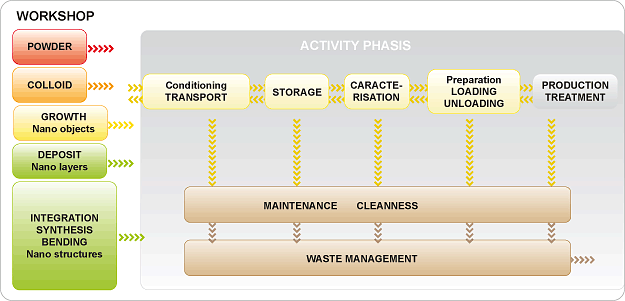
Activity phases and exposure types.
-
exposure linked to processes whose aim is not to produce nano-objects but whose implementation produces nano-objects,
-
exposure linked to the intentional manufacturing and use of nano-objects and nanomaterials.
All stages of production, from the reception and the storage of raw materials to the packaging and shipping of finished products, including the possible transfer of intermediate products can expose employees to nano-objects and nanomaterials.
The nature of nano-objects (powder, suspension in a liquid, gel, etc.), the synthesis methods used (process in gaseous phase or in liquid phase), the degree of confinement at the different stages and the ability of products to disperse in the air or on work surfaces (propensity to disperse) are the main parameters that affect the degree of exposure.
Likewise, the use of nano-objects and nanomaterials, and more precisely their handling, their integration in various matrices and their machining (trimming, polishing, cleaning, drilling, etc.) are additional sources of exposure (see module PRECAUTION, Safety Study Workshop).


